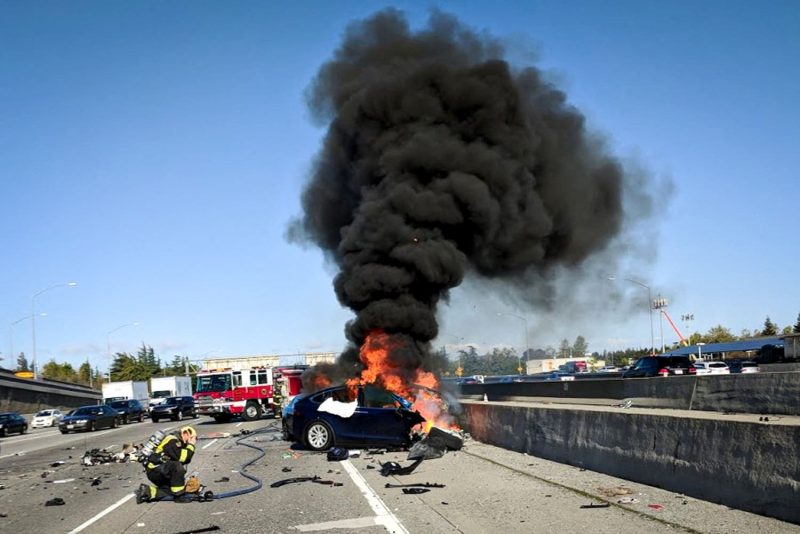In March 2018, a tragic event unfolded on Highway 101 in Mountain View, California, when Apple engineer, Walter Huang, tragically lost his life in a crash involving a Tesla Model X vehicle. The devastating accident became a subject of contention and questioning in regard to the effectiveness and safety of the Tesla Autopilot system. Following over two years of legal tussles and debates, Tesla has finalized a settlement with Huang’s family, settling the lawsuit over the accident.
The fateful incident occurred on March 23, 2018. Huang was commuting to work in his Tesla Model X, traveling along the highway, with the Autopilot system engaged when his vehicle slammed into a highway barrier. The impact resulted in a fire and Huang died in the hospital from his injuries. Notably, this was the first fatality involving a Tesla vehicle on Autopilot mode.
Following the devastating accident the family of the deceased launched a lawsuit against Tesla in 2019 with legal representatives alleging that the Autopilot system in the Tesla Model X was defective and directly caused Huang’s death. Further allegations stated that the highway barrier was previously damaged by another crash making it less effective as a safety measure and that Tesla’s Autopilot system should have recognized it as such.
In response, Tesla gave a statement concerning the crash reminding Tesla owners that, while advanced, the Autopilot system is not designed to entirely replace human action but to instead aid drivers. Elaborating, Tesla explained that drivers need to always pay attention when driving and be prepared to take over the control at any potential hazards. In spite of this assertion, the lawsuit proceeded on the grounds of the perceived flaw in the Autopilot system’s design.
The National Transportation Safety Board (NTSB) conducted a detailed investigation of the accident to try and determine the facts surrounding the fatal crash. Their final report stated that Huang was playing a game on his smartphone at the time of the accident and was not paying adequate attention to the road. However, it also faulted Tesla’s Autopilot system for failing to keep the driver engaged and focused on the driving task, thus contributing to the accident.
The legal proceedings continued for two years until it was announced in May 2021 that a settlement had been reached. The terms of this settlement have not been publicly disclosed. However, this settlement signifies an important milestone for Tesla.
This case represents one of the notable litigation involving Tesla’s Autopilot system, and its resolution serves as a crucial barometer for future potential suits. While advanced driver-assistance systems like Tesla’s Autopilot are designed to enhance safety and reduce driver fatigue, they cannot entirely replace a vigilant human driver. The tragedy underscores the fact that as automated systems and AI continue to be integrated into our everyday lives, it is imperative that we use such innovative technologies responsibly and remain aware of their current limitations.
In summary, the lawsuit involving the fatal car crash of Walter Huang was a significant event in the ongoing discussion about the challenges and responsibilities linked with autonomous vehicle technology. The settlement, while closing a chapter of a tragic story, also offers opportunities for all companies in the autonomous vehicle space to learn and improve upon their systems, keeping safety the utmost priority.




